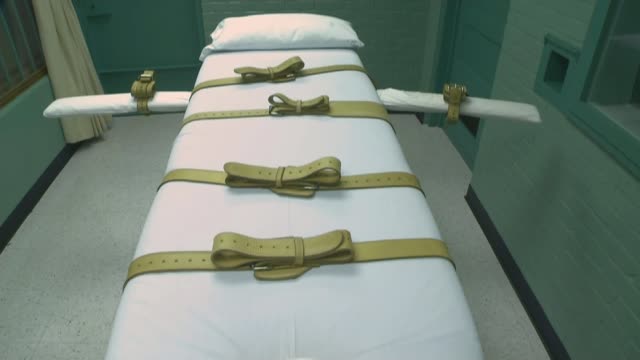by Carlos Franco-Paredes MD, MPH and Vanessa Kung MD, MPH

The death penalty is part of the history of racial discrimination in the United States and oppressive structures along with slavery, lynchings, and racial segregation.1,2 Over time, dramatic supreme justice decisions have led to controversial views surrounding its legality and morality.3,4 The advent in the 1980s of the lethal injection protocol as a method of execution brought further disagreement by transferring the discussion to the medical realm.4
In 2020, due to the COVID-19 pandemic, most US States put a moratorium on executions. This coincides with an overall decline in executions and popular opinion shifting away from capital punishment. Despite this trend, the federal government fast tracked the execution of eight prisoners from July to the November 2020 presidential election. This is the first period in the US history when federal executions exceeded combined capital punishments by all US states. Two more executions have taken place in December; and by the confirmation day of President-elect, Joe Biden, three more executions will have taken place. Prior to this execution spree, 45 federal capital punishments have taken place since 1927 with only three in the last 50 years. This unusual chain of federal executions has led to law enforcement officials to advocate for placing a hold on executions, citing their untimely inhumanity and the risk of further distrust of the criminal justice system. The frequent inaccuracies of death sentence convictions based on racial difference, ineffective representation, and inappropriate appellate review, adds to the social injury.
The disproportionate impact of COVID-19 cases and deaths among minorities overlaps with epidemics of poor health and despair among the segregated and structurally vulnerable neighborhoods across the United States.5 The burden of human suffering imposed by this pandemic compounded by the inhumane policing has reawakened the racial justice discourse that underlies mass incarceration and the death penalty. Resuming federal executions reinforces racial and social injustices in times of grief and misfortune. For the medical community, the COVID-19 pandemic has provided a sobering reminder that health equity is not only about the provision of medical care but it is also about community-activism to advance structural interventions that improve life opportunities and redistribution of resources.
In many settings, the COVID-19 pandemic has resurrected the flame of social justice and of the equal moral valuation of every human life. In this context, ending the death penalty is implicit within social contract between health professionals and society. By way of lethal injection or any available method, there is no humane way to extinguish the life of another human being for punitive purposes.
References
- Hoag A. Valuing Black Lives: A Case for Ending the Death Penalty. Colum. Hum. Rts. L. Rev. 51(3): 983-1007. (Accessed: December 18, 2020).
- Death Penalty Information Center. Enduring injustice: the persistence of racial discrimination in the U.S. death penalty. (Accessed: December 18, 2020).
- Federal Bureau of Prisons. Capital Punishment. (Accessed: December 18, 2020).
- The PLOS Medicine Editors. Lethal injection is not humane. PLoS Med 2007; 4(4): e171.
- Solis J, Franco-Paredes C, Henao-Martínez AF, Krsak M, Zimmer SM. Structural Vulnerability in the U.S. Revealed in Three Waves of COVID-19. Am J Trop Med Hyg 2020; 103(1):25-27.
Carlos Franco-Paredes is an Associate Professor of Medicine, Division of Infectious Diseases at the University of Colorado who currently works in decarceration efforts along with civil right attorneys and advocacy groups. Vanessa Kung is a third year internal medicine resident at Emory University who will start her training in the infectious diseases fellowship program at the University of Colorado, Denver. She works in reducing health inequities among underserved populations.